Musicians Templates
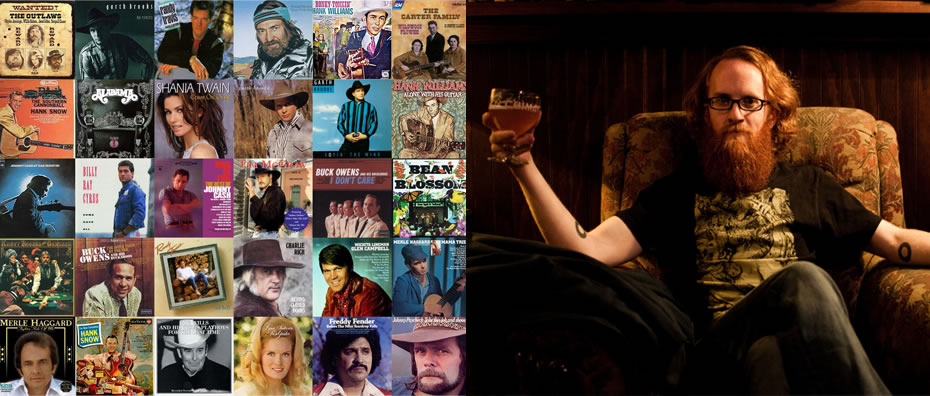
Interview by Aarron Walter
We’re excited to offer a new series of templates for musicians, created by Brooklyn-based designer Rob Weychert. Whether you’re a singer-songwriter, rapper, punk band, DJ, or pop star, we’ve got a template for you. Rob has served as a creative director at Happy Cog and an interaction designer at Harmonix, and now he works for himself out of Studiomates. He knows how to design for musicians because he’s a notable rocker himself—Rob’s alter-ego, Windhammer, is a three-time US Air Guitar national finalist. Rob also plays the actual guitar.
We talked to Rob about his design process, his guitar skills, and his love for heavy metal. Get to know Rob, and check out his template designs.
AW: Rob, music plays an important role in your life. Was that also true when you were a kid? Were you exposed to a lot of music growing up?
RW: There was definitely a lot of music in my childhood. My parents were very involved in arranging and performing the music at our church, there were often show tunes playing around the house, and Von Trapp family-style sing-alongs were common on long car trips. So that kind of stuff planted the seed and developed my ear, and the pop radio hits of my youth extended it, but my interest in music really spiked when the onset of adolescence fortuitously coincided with heavy metal’s commercial peak in the late ’80s. That was when music really started to mean something to me, when I really started paying attention.
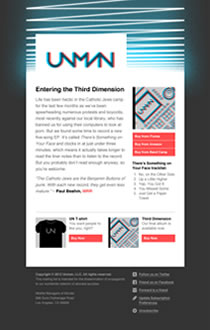
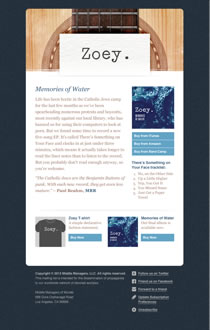
AW: What do you hope this suite of templates will do for musicians?
RW: I just hope they’ll be useful, and that musicians feel like the designs represent them. A template is a tricky design challenge, and it’s impossible to make one that will work for everyone. But you try to make it neutral and customizable enough—without sacrificing its intended flavor—that it will work for most of its target audience. So my hope is that most musicians who identify with these genres will find that their work feels at home within the templates.
AW: What are you listening to these days? What's currently got you excited?
RW: Nothing from this year has really knocked my socks off yet, but a couple things from last year that are still in heavy rotation are Drake’s Take Care and Colin Stetson’s New History Warfare Vol. 2: Judges. Drake really took me by surprise, because there’s not a lot of mainstream hip-hop that interests me, but there’s something about his wordplay and narrative that really gets me. And the production is so smooth; it’s a great record for the headphones, and it just melts into your ears. As for Colin Stetson, it had been awhile since I heard something so agreeably experimental. It’s challenging but not abrasive, and the combination of his writing and his process (one saxophone, multiple mics, almost no overdubs) results in a sound that is distinctively direct and organic. It’s a rare treat.
Aside from new music, I’ve been doing plenty of back catalog digging, too. Some discographies that have been pretty well mined lately include Flat Duo Jets (’90s retro rockabilly), Scream (’80s hardcore punk), and The Louvin Brothers (’50s country).
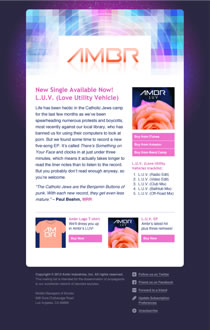
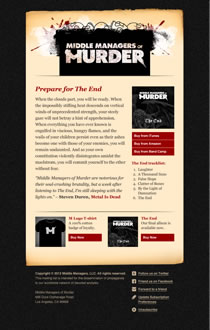
AW: You did a crazy amount of research for this project, which is the mark of a great designer. Can you talk about what sort of research you did and share insights you discovered?
RW: Mostly I just tried to immerse myself in each genre and figure out what it objectively looked like, which simply meant spending a lot of time both hearing it and seeing it.
The hearing part was simple: I just listened to a ton of music from each genre as I worked on its template. I kind of coaxed myself into the proper mindset by starting with music I already knew and loved, and then dug into stuff I had been meaning to investigate, some renowned and some below the radar.
For the seeing part, I found credible top-50 album lists and made grids of those album covers. Seeing them in aggregate allowed me to get a sense of how the best of a genre saw itself: what the predominant visual themes and color schemes were. “All-time” top-50 lists spanned decades and indicated how the genre’s traditional look had evolved; lists made from recent charts showed what the current zeitgeist looked like. The goal was to find a look that was a reasonable synthesis of old and new, critical and commercial.
And then there were individual considerations for each genre. Particularly for genres like country and hip-hop, the music is an outgrowth of a broader culture, so I tried to make sure other elements of that culture were considered. For other genres of less distinct origin, I tried to distill descriptive keywords. Singer/songwriter is “intimate” and “tactile.” Metal is “visceral” and “misanthropic.”
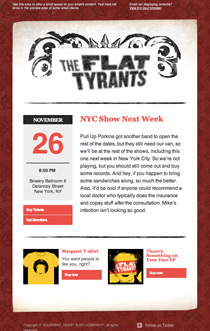
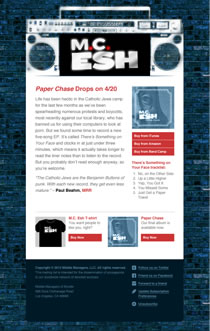
AW: You’re not only a music connoisseur—you’re a performer too. What do you play and where do you perform?
RW: I’ve been playing guitar for a few years now. It was a very belated leap across the consumer/producer divide, and it is positively thrilling to finally be participating in music in a more active and educated way, even if my chops are still quite limited. I’m slowly getting more experienced with writing and recording, but I have yet to establish any kind of real performance entity—well, at least in terms of actually making music. On the more ridiculous side of things, not long before I started playing guitar, I got involved in competitive air guitar. My alter-ego Windhammer has frightened audiences in venues big and small across the country and is a three-time US Air Guitar national finalist, currently ranked fourth in the nation.
Rob Weychert as Windhammer